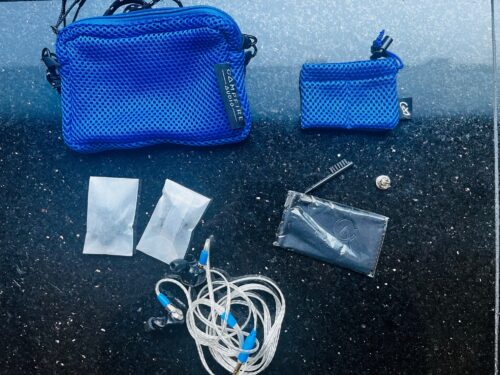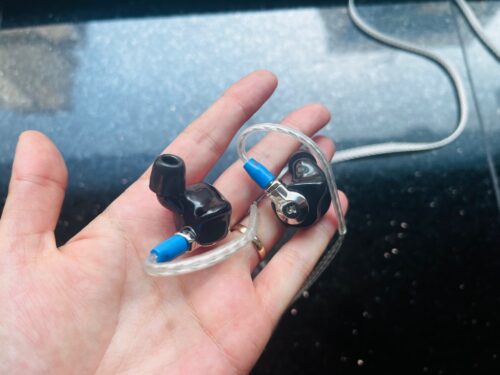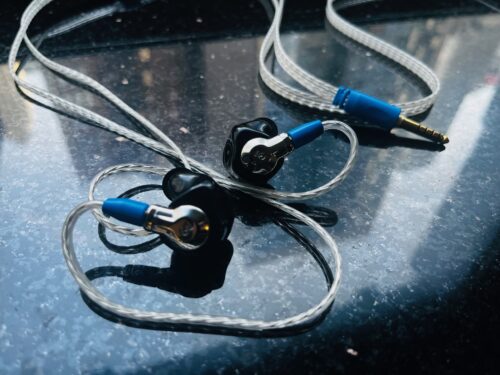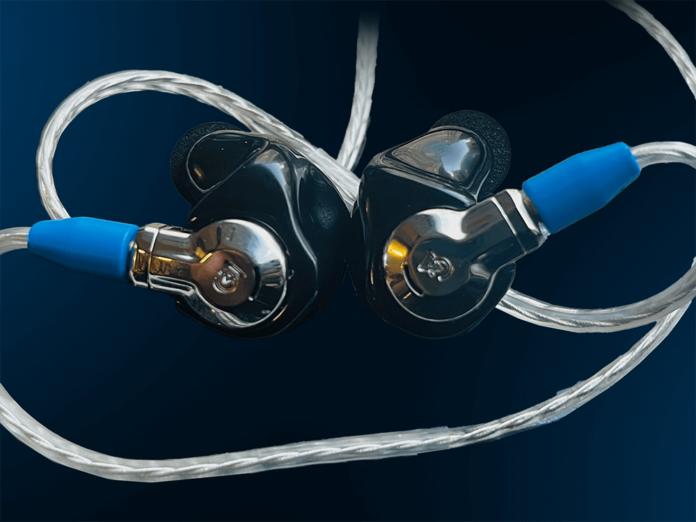Campfire Audio has just released the Cascara, which is their latest mid-level IEM to hit the market. I haven’t heard a Campfire IEM in this price range since the Polaris, which was a big success (I don’t quite understand why its out of production). Has the Brand produced another affordable IEM that will attract the masses, or will you have to spend more to get a taste of that famous Campfire sound signature?
What’s in the Box?
- 1 Time Stream Cable (Essential Version: 2.5mm, 4.4mm, 3.5mm terminations available)
- Marshmallow and silicone tips
- Cleaning tool
- Cleaning cloth
- Campfire Audio pin
- Large soft case
- Small dual-pocket soft case for shell scratch protection

Look and Feel
While the Cascara is reasonably light and comfortable, it maintains a noticeably secure fit. You’ll feel a mild pressure against the contours of your ears, but it never reaches discomfort. The snug seal also means there’s very little sound bleed.
Concerning their visual appeal, I’m not particularly drawn to the design of Campfire’s Chromatic Series; I favor the unique industrial aesthetics of models like Andromeda and Ara. Nevertheless, the Cascara showcases an unmistakably distinctive appearance, melding the robust metallic elements reminiscent of older models like Atlas and Comet with a contemporary, custom-like ergonomic design. The only minor inconvenience I encountered was the somewhat rigid MMCX connectors, which added a touch of hassle when switching cables.

Design
Campfire taken a simple approach with the Cascara, implementing only one dynamic driver in its design. The company has done this before with the Atlas and Comet, with pretty good success. While the Cascara remains a relatively efficient IEM, with a sensitivity at 94 db and a sensitivity of 15.5 Ohms, it does seem to be slightly more power hungry than older models. For this review, I paired then Cascara with the Astell & Kern SR 35. I used a 4.4mm termination, but you can choose your plug when buying the Essential version. And if you go for the Deluxe, you will get all 3 cables with different plugs.

Sound Impressions
Soundstage
Apart from its impressively broad stereo field, the Cascara also presents a ton of depth, with instruments falling far in front and way behind the ears. There’s quite a bit of height to the stage too, and all of these dynamic angles combine forces a create a highly immersive effect. That said, while there’s tons of dimension to the stage, distant or supporting instruments can sometimes lose a touch of definition, mellowing the vibrancy of the imaging. On the flip side, there’s almost a reverb effect to the soundstage, which adds an arena-like quality, often giving the impression of a live performance. And when you’re actually listening to a live performance, the experience becomes even more palpable. In fact, this is probably the one of the most entertaining soundstages I’ve heard at this price point.
Low-End
The sub bass frequencies feel super dark and rumbly, causing vibration deep in the ear canals. And certainly, throughout this frequency range, the bass is much darker and fatter with more presence than something like the Andromeda. Still, the tone feels sufficiently natural, even if still quite bold in its delivery. Double basses, for example, while heavy and colored, still had a life-like feel to them. And I never sensed any bloat. But certainly, if you listen to any music with a melodic bassline, like The Beatles, you’ll hear the bass very prominently featured in the mix. The resolution is as expected here, with great clarity that reveals plenty of texture and other subtle timbral elements. But of course, you likely won’t hear the same tightness and control in this range as you would with higher priced IEMs in the Series. That said, for a mid-range model, the low-end certainly performs with skill and personality.
Mids
There’s plenty of kick here, lending serious driving power especially to any track with heavy snares. There’s also a luminosity to the mids, with vocals and instrument having an almost glowing quality. As mentioned above, this element makes live performances sound even more realistic. Some of the above attributes are partly due to the fact that the upper mids take precedence here, while the low-mids feel somewhat recessed. So, there is a touch of hollowness to the mix. The upside to this is that it draws more attention to the contrast between the lows and highs, making for a more dynamic sound on modern genres, especially. And I should note that the low-frequencies have plenty of warmth to compensate for the tuning in this range. Finally, in terms of clarity, there’s solid separation and layering throughout this range, even in the low mids, where things can get potentially muddy. And with respect to skill in general, the Cascara certainly checks all the boxes for the price.
Highs
A little sparkle and brilliance up here, though that famous Campfire crispness is perhaps what’s most apparent. Also familiar, is the breathy and radiant vocal presentation in this range. Again, the Cascara just glows despite having a heavy low-end. As usual for Campfire, transparency is remarkable in the treble. And high frequency elements have air and buoyancy, while maintaining a richness in tone. There’s also a sense of openness in the highs that adds to the expansiveness of the soundstage and provides a nice contrast to the thick and heavy low frequencies. Although the highest treble peaks can border on sharp on occasion, I rarely ran into any discomfort. At the same time, I never felt any roll-off or smoothing over. So, while there is a brilliance to the high frequencies, it never becomes fatiguing.
Summary
There’s really nothing to dislike about the Cascara. Warm, powerful, lively and life-like with a killer soundstage, this IEM is a damn good time. While it may not possess the same level of control or speed as some of the more expensive Campfire models, it still exudes all the distinctive qualities that make the brand so attractive and recognizable. If you want a taste of Campfire, but you’re on a budget, the Cascara is the perfect entry point.
You can buy the Campfire Audio Cascara at Audio 46.
Compare the ranking of various headphones, earbuds and in-ear monitors using our tools.
Discuss this, and much more, over on our forum.
---MAJORHIFI may receive commissions from retail offers.















